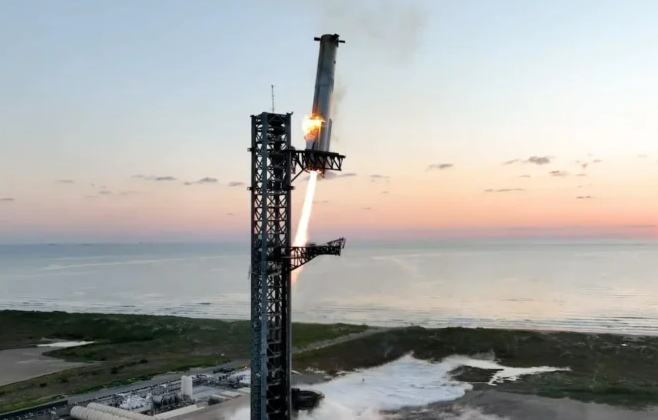
©Anadolu via Getty Images
Pre-reading questions:
I will read each question. Then, please answer them.
講師がそれぞれの質問を読むので答えましょう。
- Have you ever watched a rocket test flight?
- Are safety measures such as emergency protocols important during a rocket test flight?
Vocabulary:
I will read the words, meanings, and sample sentences. Then, repeat after me.
単語、意味、例文を読みます。講師に続いて音読しましょう。
- rocket /ROK-it/
- attempt /uh-TEMPT/
- failure /FEYL-yer/
- express /ik-SPRES/
- powerful /POU-er-fuhl/
[noun] – a device that is propelled into the air or space by the force of gases produced by burning fuel
The rocket flew high into the sky.
[noun] – an act of trying to do something, especially something difficult
His first attempt at baking was very tasty.
[noun] – the fact of someone or something not succeeding
The failure of the game made everyone sad.
[verb] – to show or make known a feeling, opinion, or idea
She will express her thoughts in the meeting.
[adjective] – having great power or strength
The powerful engine made the car go fast.
Article reading:
Please read the whole article. Then, I will check your pronunciation and intonation.
記事を音読しましょう。講師はあなたの発音とイントネーションを確認します。
On October 13, 2024, SpaceX achieved an important milestone by conducting a successful test flight of its Starship rocket. The launch took place at sunrise from the southern tip of Texas, near the Mexican border. This nearly 400-foot (121-meter) tall rocket demonstrated an impressive landing procedure, which involved catching the returning booster with mechanical arms at the launch pad. This flight highlighted significant advancements in technology compared to previous attempts that faced failures. The CEO of SpaceX, Elon Musk, expressed enthusiasm for this achievement, emphasizing that it was “science fiction without the fiction part.” This test flight revealed improved capabilities, especially in landing procedures, which are crucial for future missions to the moon and Mars.
Following liftoff, the booster returned to the launch pad around seven minutes later, under careful supervision. The mechanical arms, known as “chopsticks,” secured the booster, marking a significant moment in space exploration. NASA Administrator Bill Nelson stated that this advancement is vital for NASA’s Artemis program, which aims to bring astronauts back to the moon’s south pole. Continued testing of the Starship is essential for achieving this ambitious goal. Meanwhile, the Starship spacecraft ascended over 130 miles (212 kilometers) before landing successfully in the Indian Ocean, demonstrating its operational viability. SpaceX aspires to repeat successful booster recovery practices, using the Starship’s 33 methane-fueled engines, making it the largest and most powerful rocket ever built.
Following liftoff, the booster returned to the launch pad around seven minutes later, under careful supervision. The mechanical arms, known as “chopsticks,” secured the booster, marking a significant moment in space exploration. NASA Administrator Bill Nelson stated that this advancement is vital for NASA’s Artemis program, which aims to bring astronauts back to the moon’s south pole. Continued testing of the Starship is essential for achieving this ambitious goal. Meanwhile, the Starship spacecraft ascended over 130 miles (212 kilometers) before landing successfully in the Indian Ocean, demonstrating its operational viability. SpaceX aspires to repeat successful booster recovery practices, using the Starship’s 33 methane-fueled engines, making it the largest and most powerful rocket ever built.
True or False:
Read the sentences and identify if they are true or false based on the article.
文章を読んで、記事に基づいて正誤を答えましょう。
- SpaceX conducted a successful test flight of its Starship rocket on October 13, 2024.
- The rocket launched at sunset from the northern tip of Texas.
- The rocket was only 200 feet tall.
- The test flight demonstrated improvements in landing procedures.
- This was the first attempt by SpaceX to test the Starship.
Fill in the blanks:
Choose the correct word from the table, then fill in the blanks.
適切な言葉を選んで空欄を埋めましょう。
| rocket | attempt | failure | express | powerful |
- The teacher praised her ______ to solve the hard math problem.
- The ______ took off with a loud noise.
- The ______ storm caused many trees to fall.
- His ______ to finish the race was disappointing.
- They ______ their ideas through art.